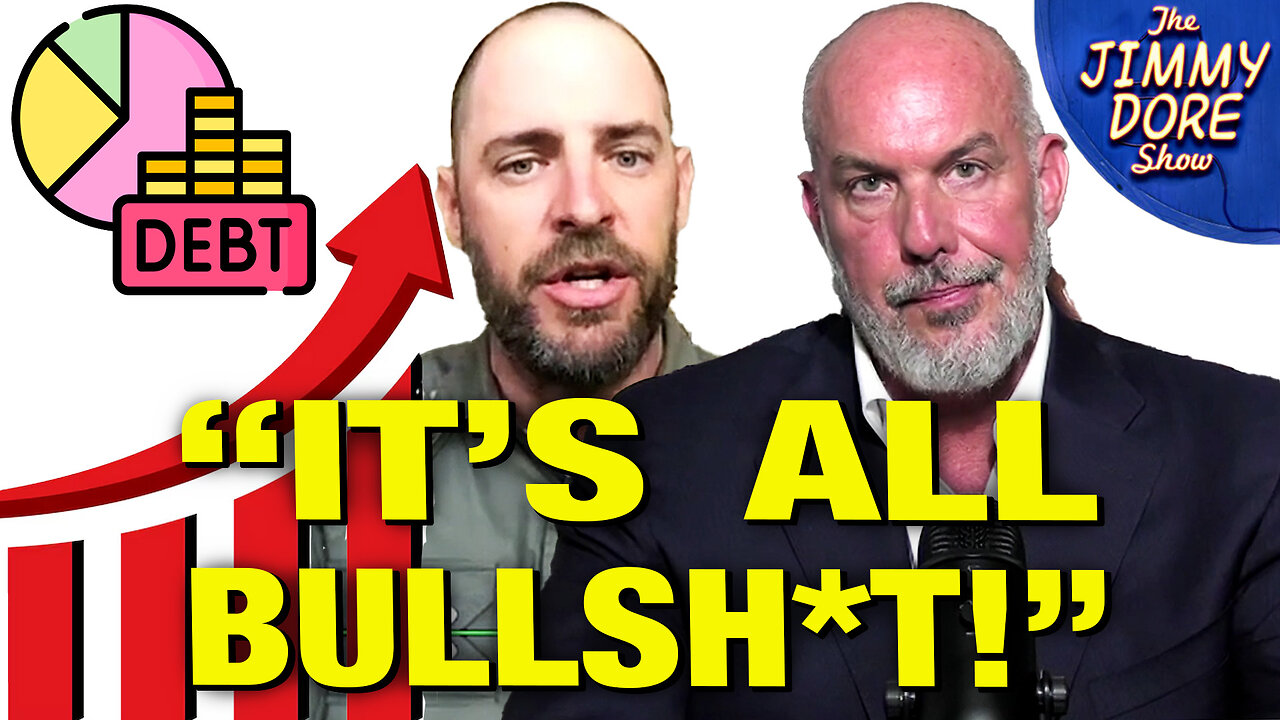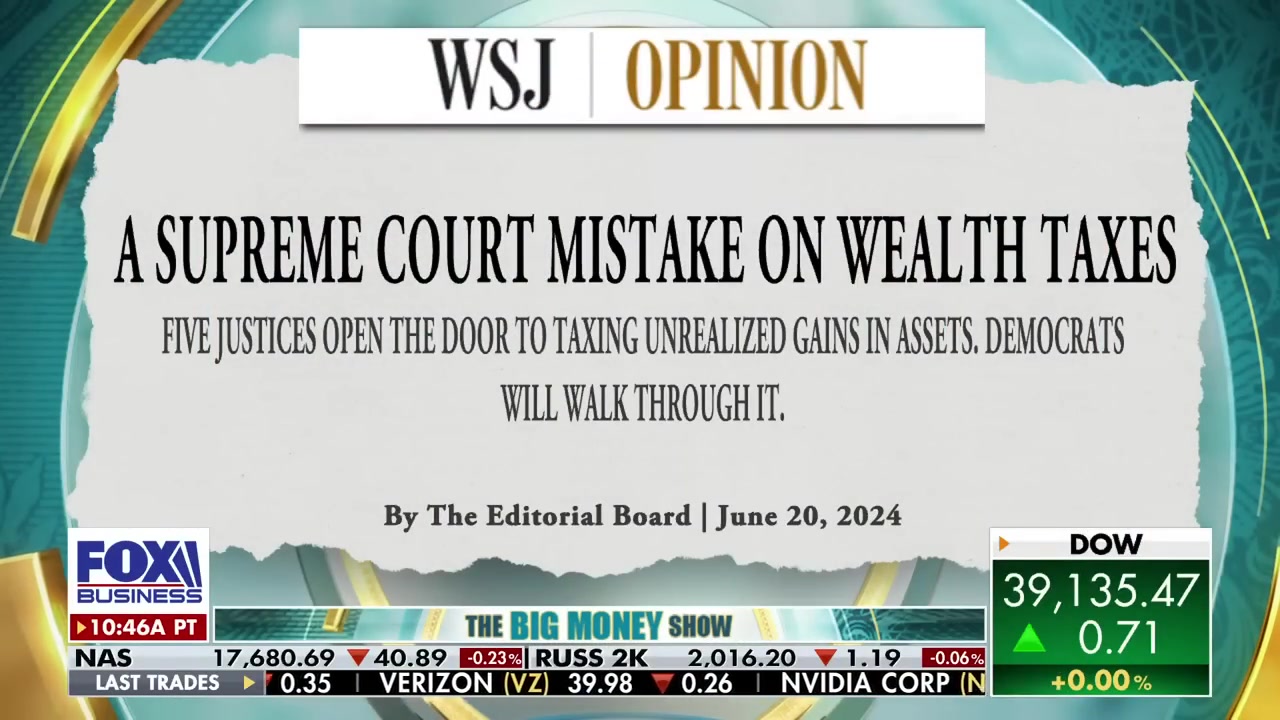International Public Notice: Reply to Germany
By Anna Von Reitz
The problem in Germany and in all other illegally occupied countries including The United States has been caused by being "represented" by British Territorial (USA, Inc.) Persons who are themselves limited by their allegiance (feudal fealty) to the British Monarch, who is a vassal of the Pope.
They, the Occupiers, have no land rights and are permanently at sea, so their Monarch takes over as their Trustee on the land and soil, but if the Monarch vacates the land and soil, as the Brits have done circa 1703, the jurisdiction of the land and soil is vacated entirely and the law of those jurisdictions is also.
The last land and soil jurisdiction Queen of England was Queen Anne (1702-14). The land and soil of England, Ireland, Scotland, and Wales has been vacated for over 300 years and they are now scrambling and going in all directions trying to make up for their deceit -- to their own people and everyone else.
Technically, with the thrones of those nations secretly vacated, those countries have not existed for 300 years. That's why all of a sudden you hear about "King Charles of Scotland" and the Irish Clan Government, and our push for people everywhere to declare their birthright political status and realize that they are not "citizens" of these corporations and not subject to their foreign, private, corporate tribunals that were brought ashore under conditions of secrecy and deceit.
All these courts operate in either Maritime Commerce or Admiralty jurisdiction.
This is why their judges fall silent when we bring land law or soil law into their courts, or mention the Constitutional Guarantees we are heir to and which they actually owe us.
They know that we have concurrent superior general jurisdiction, but out of loyalty to the Pope (in Municipal Courts) or the British Monarch (sea courts) --- not to mention their own bottom lines, as they collect booty and prize money on the side --- these officers have bullied it through and acted as privateers.
This has been accomplished by impersonating us as foreign citizens and misrepresenting our countries' land and soil jurisdiction government as being "vacant". Whether England, The United States, or Germany, the game plan and scheme is the same.
This is not a matter of political, religious, or racial differences; this is a matter of criminal constructive fraud. The answer is hand-cuffs, not war.
The English, Scottish, Irish, and Welsh thrones have all been vacated since the reign of Queen Anne (1702-1714) in favor of the "throne" of "Great Britain" -- an international land trust and trading corporation operating in the international jurisdiction of the sea.
The situation in Germany and through the rest of the world varies; so far as we can determine, Germany succumbed to this "occupied status" in 1918. Australia in 1910. And so on.
The pattern resulting in each country being defrauded by its very own version of the British Raj in India is the same:
(1) Some kind of mercenary conflict or confusion or murder spree (as recently seen in Ukraine and Libya) either destroys or leaves the land jurisdiction government in chaos; (2) the British "Territorial" Government (usually using USA, Inc. Mercenaries or NATO Mercs (or NAZI Mercs?)) moves in on an "emergency" basis to "restore public order"; (3) they pretend that the lawful land jurisdiction government is "missing, whereabouts unknown" and this becomes their excuse for settling in and illegally occupying the victim country without the knowledge or consent of the people who live there; (4) they hire members of the Bar Associations to act as Mercenaries on Commission and set up foreign Maritime and Admiralty Courts on shore; (5) they impersonate and register the native population as "citizens" owing fealty to their Monarch and as "wards of the Crown" without the victim's knowledge or consent and use this to subject the victims to their foreign "law"; (6) they create franchise corporations operating under very similar names to familiar units of the actual government and substitute these for the familiar units of the lawful government so that the substitution goes undetected; (7) they set up their own "representative government" --- which represents their commercial interests --- and use legislative "statutes" and "codes" enforced by their own private corporate tribunals and private corporate police forces, to racketeer against the native population under color of law; (8) using these means and methods, they act as parasites, using the physical, intellectual and performance assets of the victims as collateral to borrow against, and cyclically bankrupting their own corporations to offload their debts onto the victims of this gigantic fraud and impersonation scheme; (9) meantime, the profits from all this are being exported offshore and money-laundered through foreign corporations named after the victims; (10) the split from all this is 60/40 between the Pope and the British King, as it has been since King Henry the Eighth.
There are additional insurance and taxation frauds, monopoly interests and commodity rigging schemes that are very lucrative for the inland pirates.
Every case that gets docketed in their courts is a bond, which gets traded in an elite "bundled bond" market that returns 96% conviction rates.
We are each made to pay for life insurance policies on our own lives, which the Bounders collect on.
Legal tender "laws" have forced us to trade actual goods and services in inequitable exchange for promissory notes that aren't even negotiable instruments. The list goes on and on and on.
This is, obviously, an old evil. The modus operandi mimics clandestine operations of the British Navy during the Napoleonic Wars -- sneaking into harbors under False Flags, swarming the wharves of foreign ports and claiming booty, while setting fire to all the other ships in the harbor before they can weigh anchor.
But this isn't war. It's a vast commercial crime. All the elements of the entire schtick are recognized as crimes of fraud, impersonation, barratry, conspiracy, commodity rigging, false claims in commerce, racketeering under color of law, and so on. The answer is hand-cuffs, not war.
Of course, your priority is organizing your traditional land and soil jurisdiction government as quickly and intelligently as possible, so as to rebut any supposition that their continued occupation (and embezzlement) is in any way needed or desirable.
The Rothschild banking interests have been central to all of this; the French Rothschilds have managed the Vatican's shady deals since 1823; the British Rothschilds have managed the British interests well-before Waterloo; the Swiss Rothschilds have received and keep the records of all the loot.
This is why the Rothschilds and their Rockefeller collaborators and their banks are such a focus of world attention.
This is why the Bank for International Settlements and the other Usual Suspects are pushing to develop "Mbridge" as a replacement for the SWIFT System and pushing "Central Bank Digital Currency" and also hoarding "Gold Revaluation Accounts" --- which they calculate will bring them back to solvency, even though the gold in those accounts has been stolen from other parties entirely.
Neither the Department of the Global Federal Reserve (Rothschild et alia) nor the Octagon Group (their version of a mutually assured destruction pact) nor Bank for International Settlements (63 co-conspirators) nor the IMF (the Bag Man in the group) are coming clean about any of this skullduggery.
They have to come clean and all this fraud has to stop, or there is literally no sane way to conduct business nor any reason to trust any conventional banking institution.
So, we recommend reclaiming your stolen identity and birthright as a start, getting your bank account with the Global Family Bank set up, and restoring your lawful land and soil jurisdiction, government, court system, and everything else.
Issued by:
Anna Maria Riezinger, Fiduciary
The United States of America
In care of: Box 520994
Big Lake, Alaska 99652
https://tasa.americanstatenationals.org/correct-your-status/
People
Circles
Posts
International Public Notice: Ever Since 1823....
By Anna Von Reitz
It turns out that the French Rothschild banking empire has been managing the Vatican's assets ever since 1823. Doesn't that explain a lot of history?
Bloody history. Dishonest history. Evil history. Napoleonic history. Payseur history. Even Abraham Lincoln history.
We consider this the last shoe that needed to be dropped, the last pixel needed to complete the total picture of depravity, corruption, and hidden collusion.
Charlemagne would be turning over in his grave, but Mayer Amschel Rothschild would be dancing on it.
It was a unique coup, to pretend to hate the Holy Roman Empire, while working for it and using its vast assets to benefit oneself from it -- but also a textbook application of the Sabbatean modus operandi -- to deceive at all costs and profit from it.
No doubt the Roman Cult hidden within the Catholic Church --- no slouches in the realm of deception -- learned a few things themselves.
The so-called Egyptian Jews were Idolaters who pretended to be Jews; our best glimpse of them came when Moses confronted them over the Golden Calf, a new moon representation of the Egyptian Cow Goddess Hathor.
Once they arrived in Canaan they mixed and mashed with the local Amorite and Samaritan and Canaanite Idolaters and eventually concocted their own version of Judaism -- what Jesus called the "Synagogue of Satan".
They concocted their own version of Christianity, too -- a mixture of Egyptian monotheism, Babylonian idolatry, Early Christian teachings and Greek Mythology. They pictured Jesus as Zeus, therefore the name I-zeus.
This is the branch of "Christianity" that survived long enough to make it to Rome, having made a long trek from Samaria to Turkey to the Balkan homelands of the Romans and finally to Rome itself.
There was no conversion of Constantine the Great.
He and his Flavian family already practiced this form of Christianity that was popular among the Dacian nobility. As usual, the story we got was "true in a way" but also upside down.
Constantine didn't convert to the Apostles' Christian Church; the Apostles' Church converted to Constantine's version of Christianity, instead.
This is how we got the golden-haired, blue-eyed, perfectly formed and god-like figure of Zeus transferred to Zeus's Son, I-zeus.
Frankfurt, in the mid-to-late 1700s, is where the Synagogue of Satan caught up with the Roman Cult of I-zeus. Mayer Amschel Bauer, a Jew who was not a Jew, made the happy acquaintance of Fritz von Estorff, a Christian who wasn't a Christian.
The rest is history, or perhaps, fate.
Jews could charge usury to non-Jews; and, Christians, though as greedy as everyone else, couldn't charge usury at all. It didn't take long for the Holy Roman Empire to employ Jews to do all their banking for them, as the Jews could lend at interest.
So a bit of Roman Christian hypocrisy combined with Jewish mystical idolatry, both having their roots in Samaria, and neither one being a pure form of either religion, formed an alliance based on their mutual desire to be both rich and powerful.
This version of Christianity and this version of Judaism, both ultimately coming out of Samaria, pretended to hate Islam, a religion that they invented and bank-rolled as a foil -- just as they more recently invented Israel as a foil for Palestinians.
The moon god of Islam, Allah, would be used as the "necessary enemy" of their own sun god, Amun Ra.
That deliberately engineered conflict would give them no end of excuses for war-profiteering and meddling with trade routes and commodity rigging and, of course, taxation.
Their cousins, the Dacian priests of Cybele, were already the tax collectors for the City of Rome.
Amun Ra is the reason that Romanized Christians say "Amen" at the end of every prayer.
The Sabbatean Jews and the Roman Flavian Cult embedded in the Church of Rome both represent offshoots of the far older Babylonian religion; they were twins formed in the womb of Samaria, more like each other -- under the skin -- than any outsider might suppose.
Both actually practice and believe things that are carefully hidden --- and evil, but perhaps it is simply knowing this that binds them together, like two blackmailers who have the goods on each other.
Both indulge in Black Masses and Orgies; both cultivate the ability to lie convincingly, both practice various kinds of blood sacrifice including human sacrifice, both use sex as a sacrament, both practice idolatry, especially the idolatry of money.
And if one calls himself a Jew and another calls himself a Christian, it's all the same to them. Anyone that wants to call himself a Muslim and participate in all of this, will be welcomed as one of them. Religion is just a means to an end and their cynicism knows no bounds.
The only actual religion they have is the religion of Mammon, and they are all in it together, both ends against the middle, which meets in the High Lodges of the Scottish Rite and spreads out like a spider web from there.
We feel quite content having answered the riddles and traced the web back to its home in ancient Samaria, and thence to its new home in Scotland, and all around the world from there along every sea lane and byway, wherever men lust for sex and gold and are willing to wager everything for it.
The enemy of humankind is revealed to be humankind itself, and to each of us a decision is given, to choose life or death, according to what seems good to us.
The Black Magic Money Spell has no power; no delusions about money remain. We recognize the dead things in the realm of the dead and don't concern ourselves: to each is given a time and a season, and the time of Babylon, like the season of the Saturnine Brotherhood, is long gone.
Issued by:
Anna Maria Riezinger, Fiduciary
The United States of America
In care of: Box 520994
Big Lake, Alaska 99652
http://www.paulstramer.net/2024/07/international-public-notice-ever-since.html
"Taxation is a method by which the government can exercise control over YOUR ability to travel, what food you eat, what health measure you make, what housing you live in. It breaks society down into sectors of rich and poor. Taxation will soon be used to control your political activism by denying activists rights to tax returns.
Taxation is governments first line of population control.
Taxation is a social measurement: pay your taxes and you are a good citizen. Don't pay and government grants itself the right to treat you like a criminal." - Nakajima
https://rumble.com/v52unqr-can-we-print-endless-money-epic-debate-over-modern-monetary-theory.html
#tax #taxes #finance #financial #banks #banking #money #moneysupply
Videos
President Joe Biden has two obstacles standing in his way of reelection. His failure at the border, and the crippling inflation caused by his Bidenomics agenda. Inflation stood at 1.4% the month Biden took office and then skyrocketed to 9.1% in June 2022 before falling to 3% a year later. But it has been stuck near that still-elevated rate since. The president’s critics have dubbed the phenomenon “Bidenflation.” With record interest rates sitting at above 5% the economy has come to a stand still. Federal Reserve Chairman Jerome Powell claims recent high inflation has made it less likely we will see interest rates cut in the coming weeks and months. Initially the FED had predicted three rate cuts for 2024. But the FED wants to see inflation lower to 2% before they make any cuts. Without those cuts, Mortgage rates are at record highs and getting a loan can feel impossible. Making owning a new home, and even having children feel out of reach. On this episode of 360 Views, Scottie Nell Hughes discusses with her panel (Garland Nixon, Political Commentator; Steve Gill, Political Analyst and Radio Host; Steve Hayes, Tax Attorney and Chairman of Americans for Fair Taxation) if the Biden administration is destroying the American Dream.
Taxation without representation, standing armies, suspending legislatures, and so much more - these were all symptoms of a much greater, underlying issue - the British claim of power over the colonies “in all cases whatsoever.”
Path to Liberty: February 5, 2024
Inflation is not hard to understand. There is no secret formula and there are no deeper mysteries. The amount of currency divided by the amount of economic activity gives you the value of the currency. Sure, you can find small complications in what builds those two numbers, but the math is inescapable.
People
Circles
Videos
President Joe Biden has two obstacles standing in his way of reelection. His failure at the border, and the crippling inflation caused by his Bidenomics agenda. Inflation stood at 1.4% the month Biden took office and then skyrocketed to 9.1% in June 2022 before falling to 3% a year later. But it has been stuck near that still-elevated rate since. The president’s critics have dubbed the phenomenon “Bidenflation.” With record interest rates sitting at above 5% the economy has come to a stand still. Federal Reserve Chairman Jerome Powell claims recent high inflation has made it less likely we will see interest rates cut in the coming weeks and months. Initially the FED had predicted three rate cuts for 2024. But the FED wants to see inflation lower to 2% before they make any cuts. Without those cuts, Mortgage rates are at record highs and getting a loan can feel impossible. Making owning a new home, and even having children feel out of reach. On this episode of 360 Views, Scottie Nell Hughes discusses with her panel (Garland Nixon, Political Commentator; Steve Gill, Political Analyst and Radio Host; Steve Hayes, Tax Attorney and Chairman of Americans for Fair Taxation) if the Biden administration is destroying the American Dream.
Taxation without representation, standing armies, suspending legislatures, and so much more - these were all symptoms of a much greater, underlying issue - the British claim of power over the colonies “in all cases whatsoever.”
Path to Liberty: February 5, 2024
Inflation is not hard to understand. There is no secret formula and there are no deeper mysteries. The amount of currency divided by the amount of economic activity gives you the value of the currency. Sure, you can find small complications in what builds those two numbers, but the math is inescapable.
Unlimited power. Robbery. Consolidation. Anti-federalists repeatedly warned that a federal power of direct taxation would destroy liberty.
Path to Liberty: April 17, 2023
JOIN TAC: https://tenthamendmentcenter.com/members/
Show Archives: https://tenthamendmentcenter.com/pathtoliberty/
Subscribe and Review on Apple: https://podcasts.apple.com/us/podcast/path-to-liberty/id1440549211
In a huge change from the Articles of Confederation, the Constitution eliminated “requisitions,” what many saw as a primary reason for the new system of taxation. Rejecting Alexander Hamilton and other Federalists in this debate were Patrick Henry and the anti-federalists.
Path to Liberty, Fast Friday Edition: April 14, 2023
JOIN TAC: https://tenthamendmentcenter.com/members/
Show Archives: https://tenthamendmentcenter.com/pathtoliberty/
Subscribe and Review on Apple: https://podcasts.apple.com/us/podcast/path-to-liberty/id1440549211
Posts
International Public Notice: Reply to Germany
By Anna Von Reitz
The problem in Germany and in all other illegally occupied countries including The United States has been caused by being "represented" by British Territorial (USA, Inc.) Persons who are themselves limited by their allegiance (feudal fealty) to the British Monarch, who is a vassal of the Pope.
They, the Occupiers, have no land rights and are permanently at sea, so their Monarch takes over as their Trustee on the land and soil, but if the Monarch vacates the land and soil, as the Brits have done circa 1703, the jurisdiction of the land and soil is vacated entirely and the law of those jurisdictions is also.
The last land and soil jurisdiction Queen of England was Queen Anne (1702-14). The land and soil of England, Ireland, Scotland, and Wales has been vacated for over 300 years and they are now scrambling and going in all directions trying to make up for their deceit -- to their own people and everyone else.
Technically, with the thrones of those nations secretly vacated, those countries have not existed for 300 years. That's why all of a sudden you hear about "King Charles of Scotland" and the Irish Clan Government, and our push for people everywhere to declare their birthright political status and realize that they are not "citizens" of these corporations and not subject to their foreign, private, corporate tribunals that were brought ashore under conditions of secrecy and deceit.
All these courts operate in either Maritime Commerce or Admiralty jurisdiction.
This is why their judges fall silent when we bring land law or soil law into their courts, or mention the Constitutional Guarantees we are heir to and which they actually owe us.
They know that we have concurrent superior general jurisdiction, but out of loyalty to the Pope (in Municipal Courts) or the British Monarch (sea courts) --- not to mention their own bottom lines, as they collect booty and prize money on the side --- these officers have bullied it through and acted as privateers.
This has been accomplished by impersonating us as foreign citizens and misrepresenting our countries' land and soil jurisdiction government as being "vacant". Whether England, The United States, or Germany, the game plan and scheme is the same.
This is not a matter of political, religious, or racial differences; this is a matter of criminal constructive fraud. The answer is hand-cuffs, not war.
The English, Scottish, Irish, and Welsh thrones have all been vacated since the reign of Queen Anne (1702-1714) in favor of the "throne" of "Great Britain" -- an international land trust and trading corporation operating in the international jurisdiction of the sea.
The situation in Germany and through the rest of the world varies; so far as we can determine, Germany succumbed to this "occupied status" in 1918. Australia in 1910. And so on.
The pattern resulting in each country being defrauded by its very own version of the British Raj in India is the same:
(1) Some kind of mercenary conflict or confusion or murder spree (as recently seen in Ukraine and Libya) either destroys or leaves the land jurisdiction government in chaos; (2) the British "Territorial" Government (usually using USA, Inc. Mercenaries or NATO Mercs (or NAZI Mercs?)) moves in on an "emergency" basis to "restore public order"; (3) they pretend that the lawful land jurisdiction government is "missing, whereabouts unknown" and this becomes their excuse for settling in and illegally occupying the victim country without the knowledge or consent of the people who live there; (4) they hire members of the Bar Associations to act as Mercenaries on Commission and set up foreign Maritime and Admiralty Courts on shore; (5) they impersonate and register the native population as "citizens" owing fealty to their Monarch and as "wards of the Crown" without the victim's knowledge or consent and use this to subject the victims to their foreign "law"; (6) they create franchise corporations operating under very similar names to familiar units of the actual government and substitute these for the familiar units of the lawful government so that the substitution goes undetected; (7) they set up their own "representative government" --- which represents their commercial interests --- and use legislative "statutes" and "codes" enforced by their own private corporate tribunals and private corporate police forces, to racketeer against the native population under color of law; (8) using these means and methods, they act as parasites, using the physical, intellectual and performance assets of the victims as collateral to borrow against, and cyclically bankrupting their own corporations to offload their debts onto the victims of this gigantic fraud and impersonation scheme; (9) meantime, the profits from all this are being exported offshore and money-laundered through foreign corporations named after the victims; (10) the split from all this is 60/40 between the Pope and the British King, as it has been since King Henry the Eighth.
There are additional insurance and taxation frauds, monopoly interests and commodity rigging schemes that are very lucrative for the inland pirates.
Every case that gets docketed in their courts is a bond, which gets traded in an elite "bundled bond" market that returns 96% conviction rates.
We are each made to pay for life insurance policies on our own lives, which the Bounders collect on.
Legal tender "laws" have forced us to trade actual goods and services in inequitable exchange for promissory notes that aren't even negotiable instruments. The list goes on and on and on.
This is, obviously, an old evil. The modus operandi mimics clandestine operations of the British Navy during the Napoleonic Wars -- sneaking into harbors under False Flags, swarming the wharves of foreign ports and claiming booty, while setting fire to all the other ships in the harbor before they can weigh anchor.
But this isn't war. It's a vast commercial crime. All the elements of the entire schtick are recognized as crimes of fraud, impersonation, barratry, conspiracy, commodity rigging, false claims in commerce, racketeering under color of law, and so on. The answer is hand-cuffs, not war.
Of course, your priority is organizing your traditional land and soil jurisdiction government as quickly and intelligently as possible, so as to rebut any supposition that their continued occupation (and embezzlement) is in any way needed or desirable.
The Rothschild banking interests have been central to all of this; the French Rothschilds have managed the Vatican's shady deals since 1823; the British Rothschilds have managed the British interests well-before Waterloo; the Swiss Rothschilds have received and keep the records of all the loot.
This is why the Rothschilds and their Rockefeller collaborators and their banks are such a focus of world attention.
This is why the Bank for International Settlements and the other Usual Suspects are pushing to develop "Mbridge" as a replacement for the SWIFT System and pushing "Central Bank Digital Currency" and also hoarding "Gold Revaluation Accounts" --- which they calculate will bring them back to solvency, even though the gold in those accounts has been stolen from other parties entirely.
Neither the Department of the Global Federal Reserve (Rothschild et alia) nor the Octagon Group (their version of a mutually assured destruction pact) nor Bank for International Settlements (63 co-conspirators) nor the IMF (the Bag Man in the group) are coming clean about any of this skullduggery.
They have to come clean and all this fraud has to stop, or there is literally no sane way to conduct business nor any reason to trust any conventional banking institution.
So, we recommend reclaiming your stolen identity and birthright as a start, getting your bank account with the Global Family Bank set up, and restoring your lawful land and soil jurisdiction, government, court system, and everything else.
Issued by:
Anna Maria Riezinger, Fiduciary
The United States of America
In care of: Box 520994
Big Lake, Alaska 99652
https://tasa.americanstatenationals.org/correct-your-status/
International Public Notice: Ever Since 1823....
By Anna Von Reitz
It turns out that the French Rothschild banking empire has been managing the Vatican's assets ever since 1823. Doesn't that explain a lot of history?
Bloody history. Dishonest history. Evil history. Napoleonic history. Payseur history. Even Abraham Lincoln history.
We consider this the last shoe that needed to be dropped, the last pixel needed to complete the total picture of depravity, corruption, and hidden collusion.
Charlemagne would be turning over in his grave, but Mayer Amschel Rothschild would be dancing on it.
It was a unique coup, to pretend to hate the Holy Roman Empire, while working for it and using its vast assets to benefit oneself from it -- but also a textbook application of the Sabbatean modus operandi -- to deceive at all costs and profit from it.
No doubt the Roman Cult hidden within the Catholic Church --- no slouches in the realm of deception -- learned a few things themselves.
The so-called Egyptian Jews were Idolaters who pretended to be Jews; our best glimpse of them came when Moses confronted them over the Golden Calf, a new moon representation of the Egyptian Cow Goddess Hathor.
Once they arrived in Canaan they mixed and mashed with the local Amorite and Samaritan and Canaanite Idolaters and eventually concocted their own version of Judaism -- what Jesus called the "Synagogue of Satan".
They concocted their own version of Christianity, too -- a mixture of Egyptian monotheism, Babylonian idolatry, Early Christian teachings and Greek Mythology. They pictured Jesus as Zeus, therefore the name I-zeus.
This is the branch of "Christianity" that survived long enough to make it to Rome, having made a long trek from Samaria to Turkey to the Balkan homelands of the Romans and finally to Rome itself.
There was no conversion of Constantine the Great.
He and his Flavian family already practiced this form of Christianity that was popular among the Dacian nobility. As usual, the story we got was "true in a way" but also upside down.
Constantine didn't convert to the Apostles' Christian Church; the Apostles' Church converted to Constantine's version of Christianity, instead.
This is how we got the golden-haired, blue-eyed, perfectly formed and god-like figure of Zeus transferred to Zeus's Son, I-zeus.
Frankfurt, in the mid-to-late 1700s, is where the Synagogue of Satan caught up with the Roman Cult of I-zeus. Mayer Amschel Bauer, a Jew who was not a Jew, made the happy acquaintance of Fritz von Estorff, a Christian who wasn't a Christian.
The rest is history, or perhaps, fate.
Jews could charge usury to non-Jews; and, Christians, though as greedy as everyone else, couldn't charge usury at all. It didn't take long for the Holy Roman Empire to employ Jews to do all their banking for them, as the Jews could lend at interest.
So a bit of Roman Christian hypocrisy combined with Jewish mystical idolatry, both having their roots in Samaria, and neither one being a pure form of either religion, formed an alliance based on their mutual desire to be both rich and powerful.
This version of Christianity and this version of Judaism, both ultimately coming out of Samaria, pretended to hate Islam, a religion that they invented and bank-rolled as a foil -- just as they more recently invented Israel as a foil for Palestinians.
The moon god of Islam, Allah, would be used as the "necessary enemy" of their own sun god, Amun Ra.
That deliberately engineered conflict would give them no end of excuses for war-profiteering and meddling with trade routes and commodity rigging and, of course, taxation.
Their cousins, the Dacian priests of Cybele, were already the tax collectors for the City of Rome.
Amun Ra is the reason that Romanized Christians say "Amen" at the end of every prayer.
The Sabbatean Jews and the Roman Flavian Cult embedded in the Church of Rome both represent offshoots of the far older Babylonian religion; they were twins formed in the womb of Samaria, more like each other -- under the skin -- than any outsider might suppose.
Both actually practice and believe things that are carefully hidden --- and evil, but perhaps it is simply knowing this that binds them together, like two blackmailers who have the goods on each other.
Both indulge in Black Masses and Orgies; both cultivate the ability to lie convincingly, both practice various kinds of blood sacrifice including human sacrifice, both use sex as a sacrament, both practice idolatry, especially the idolatry of money.
And if one calls himself a Jew and another calls himself a Christian, it's all the same to them. Anyone that wants to call himself a Muslim and participate in all of this, will be welcomed as one of them. Religion is just a means to an end and their cynicism knows no bounds.
The only actual religion they have is the religion of Mammon, and they are all in it together, both ends against the middle, which meets in the High Lodges of the Scottish Rite and spreads out like a spider web from there.
We feel quite content having answered the riddles and traced the web back to its home in ancient Samaria, and thence to its new home in Scotland, and all around the world from there along every sea lane and byway, wherever men lust for sex and gold and are willing to wager everything for it.
The enemy of humankind is revealed to be humankind itself, and to each of us a decision is given, to choose life or death, according to what seems good to us.
The Black Magic Money Spell has no power; no delusions about money remain. We recognize the dead things in the realm of the dead and don't concern ourselves: to each is given a time and a season, and the time of Babylon, like the season of the Saturnine Brotherhood, is long gone.
Issued by:
Anna Maria Riezinger, Fiduciary
The United States of America
In care of: Box 520994
Big Lake, Alaska 99652
http://www.paulstramer.net/2024/07/international-public-notice-ever-since.html
"Taxation is a method by which the government can exercise control over YOUR ability to travel, what food you eat, what health measure you make, what housing you live in. It breaks society down into sectors of rich and poor. Taxation will soon be used to control your political activism by denying activists rights to tax returns.
Taxation is governments first line of population control.
Taxation is a social measurement: pay your taxes and you are a good citizen. Don't pay and government grants itself the right to treat you like a criminal." - Nakajima
https://rumble.com/v52unqr-can-we-print-endless-money-epic-debate-over-modern-monetary-theory.html
#tax #taxes #finance #financial #banks #banking #money #moneysupply
Expert calls Trump’s proposal to stop taxation on tips ‘genius’
https://www.brighteon.com/444de686-2130-47c3-a6c4-46ef97e76e4e
How to escape the WAGE SLAVE SYSTEM that traps you in a spiral of taxation and debt
https://www.brighteon.com/85a6d721-f99d-454a-95d4-90e8d450b26b

- California's budget shortfall and proposed taxes on electric vehicles. (0:03)- Rising fast food worker wages and their impact on businesses. (5:03)- Taxation, tips, and freedom. (10:37)- Taxes, inflation, and safe-haven assets like gold, silver, and land. (15:02)- Ammunition, power tools, and solar generators for survival scenarios. (19:24)- Preparedness, survival products, and bartering during economic collapse. (25:13)For more updates, visit: http://www.brighteon.com/channel/hrreport NaturalNews videos would not be possible without you, as always we remain passionately dedicated to our mission of educating people all over the world on the subject of natural healing remedies and personal liberty (food freedom, medical freedom, the freedom of speech, etc.). Together, we’re helping create a better world, with more honest food labeling, reduced chemical contamination, the avoidance of toxic heavy metals and vastly increased scientific transparency.▶️ Every dollar you spend at the Health Ranger Store goes toward helping us achieve important science and content goals for humanity: https://www.healthrangerstore.com/ ▶️ Sign Up For Our Newsletter: https://www.naturalnews.com/Readerregistration.html ▶️ Brighteon: https://www.brighteon.com/channels/hrreport ▶️ Join Our Social Network: https://brighteon.social/@HealthRanger ▶️ Check In Stock Products at: https://PrepWithMike.com 🔴 Brighteon.Social: https://brighteon.social/@HealthRanger 🔴 Gettr: https://gettr.com/user/naturalnews 🔴 Gab: https://gab.com/NaturalNews 🔴 Bitchute: https://www.bitchute.com/channel/naturalnews 🔴 Rumble: https://rumble.com/c/HealthRangerReport 🔴 Mewe: https://mewe.com/p/naturalnews 🔴 Spreely: https://social.spreely.com/NaturalNews 🔴 Telegram: https://t.me/naturalnewsofficial 🔴 Pinterest: https://www.pinterest.com/realhealthrangerstore/
www.brighteon.com
















